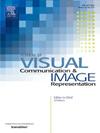一种用于高级驾驶辅助系统的新型高效图像去雾技术
IF 3.1
4区 计算机科学
Q2 COMPUTER SCIENCE, INFORMATION SYSTEMS
Journal of Visual Communication and Image Representation
Pub Date : 2025-08-21
DOI:10.1016/j.jvcir.2025.104570
引用次数: 0
摘要
高级驾驶辅助系统(ADAS)依靠清晰的视觉输入来确保安全准确的驾驶决策。然而,雾霾等大气条件会显著降低图像的可见度和清晰度。本文提出了一种专为ADAS应用而设计的高效、轻量级的图像去雾方法。该方法基于两个核心模块:深度改进传输速率估计(DRTRE)和分布式AirLight估计(DALE)。与基于深度学习的技术不同,我们的方法不需要任何训练数据或神经网络,使其非常适合实时硬件实现。DRTRE使用图像的饱和度和值分量估计场景深度,并通过自适应阈值和校准来改进传输速率。DALE通过分析空间分布的深度值来改进AirLight的估计,以处理不均匀的雾霾。这些模块一起恢复清晰的图像,同时最大限度地减少计算开销。实验结果表明,与现有方法相比,该方法的平均PSNR提高了18.19%,MSE降低了约33.80%。它还显示了SSIM的持续改进,增益高达11.63%,表明结构保真度得到了提高。此外,该方法将综合性能度量(CPM)提高了4.07倍,将自然图像质量评估器(NIQE)降低了17.17%,证实了优越的感知和定量性能。整个系统采用Verilog硬件描述语言(HDL)实现,并在Xilinx Zynq-7000系列现场可编程门阵列(FPGA)上进行合成。与现有设计相比,所提出的架构展示了可观的硬件效率,实现了高达98.3%的逻辑元件减少,54.4%的内存寄存器减少,61.9%的行缓冲区使用减少。本文章由计算机程序翻译,如有差异,请以英文原文为准。
A novel and efficient image dehazing technique for Advanced Driver Assistance Systems
Advanced Driver Assistance Systems (ADAS) rely on clear visual input to ensure safe and accurate driving decisions. However, atmospheric conditions like haze and fog can significantly reduce image visibility and clarity. This paper presents an efficient and lightweight image dehazing method specifically designed for ADAS applications. The proposed approach is based on two core modules: Depth Refinement Transmission Rate Estimation (DRTRE) and Distributed AirLight Estimation (DALE). Unlike deep learning-based techniques, our method does not require any training data or neural networks, making it well-suited for real-time hardware implementation. DRTRE estimates scene depth using the saturation and value components of the image and refines the transmission rate through adaptive thresholding and calibration. DALE improves the estimation of AirLight by analyzing spatially distributed depth values to handle non-uniform haze. Together, these modules restore clear images while minimizing computational overhead. Experimental results show that the proposed dehazing method achieves an average PSNR improvement of up to 18.19% and MSE reduction of approximately 33.80% compared to existing methods. It also demonstrates a consistent improvement in SSIM, with gains of up to 11.63%, indicating enhanced structural fidelity. Furthermore, the method improves the Comprehensive Performance Metric (CPM) by up to 4.07 times and reduces the Naturalness Image Quality Evaluator (NIQE) by as much as 17.17%, confirming superior perceptual and quantitative performance. The complete system is implemented in Verilog Hardware Description Language (HDL) and synthesized on a Xilinx Zynq-7000 series Field Programmable Gate Array (FPGA). The proposed architecture demonstrates substantial hardware efficiency, achieving reductions of up to 98.3% in logic elements, 54.4% in memory registers, and 61.9% in line buffer usage compared to existing designs.
求助全文
通过发布文献求助,成功后即可免费获取论文全文。
去求助
来源期刊

Journal of Visual Communication and Image Representation
工程技术-计算机:软件工程
CiteScore
5.40
自引率
11.50%
发文量
188
审稿时长
9.9 months
期刊介绍:
The Journal of Visual Communication and Image Representation publishes papers on state-of-the-art visual communication and image representation, with emphasis on novel technologies and theoretical work in this multidisciplinary area of pure and applied research. The field of visual communication and image representation is considered in its broadest sense and covers both digital and analog aspects as well as processing and communication in biological visual systems.
 求助内容:
求助内容: 应助结果提醒方式:
应助结果提醒方式:


